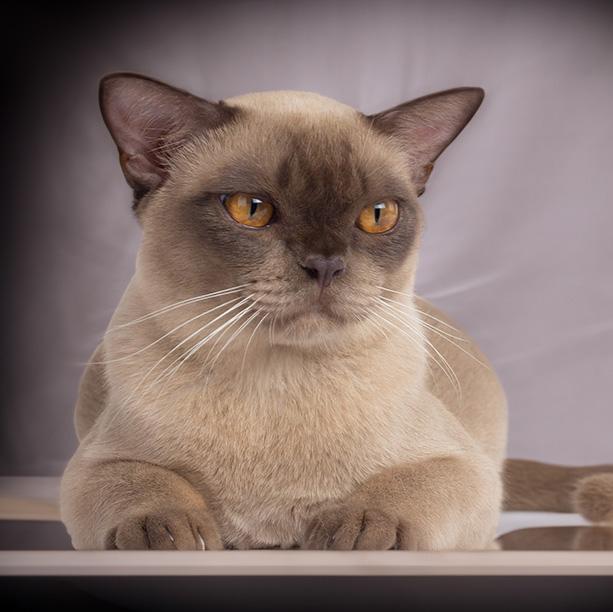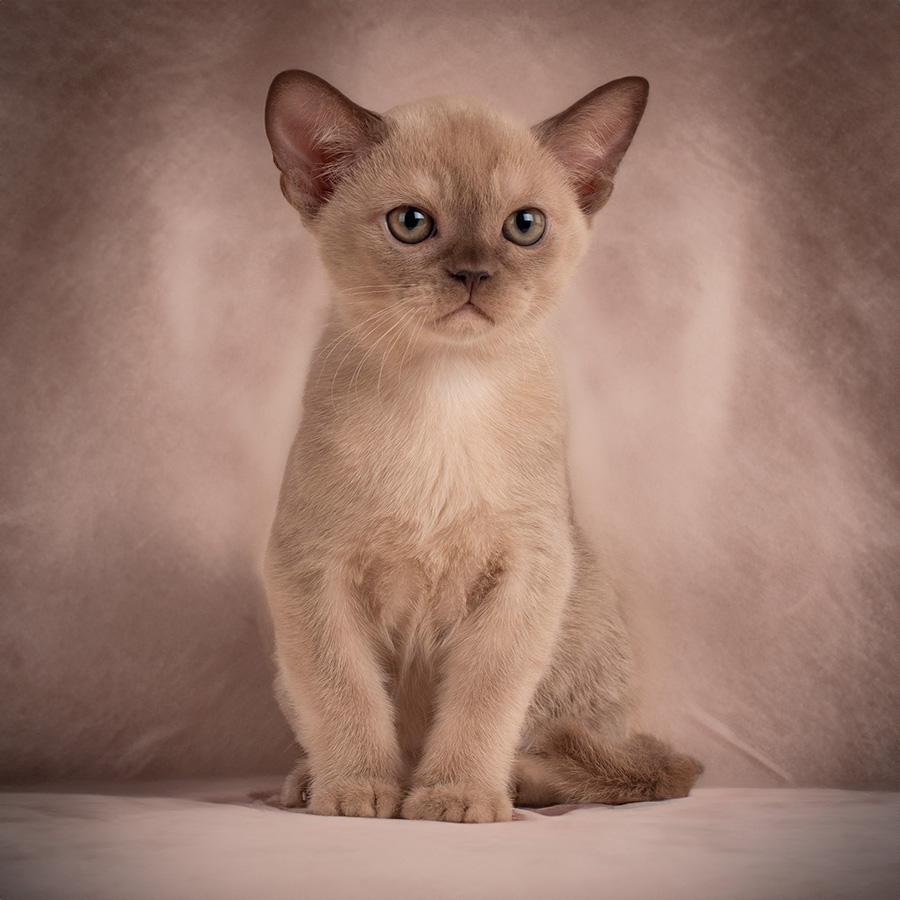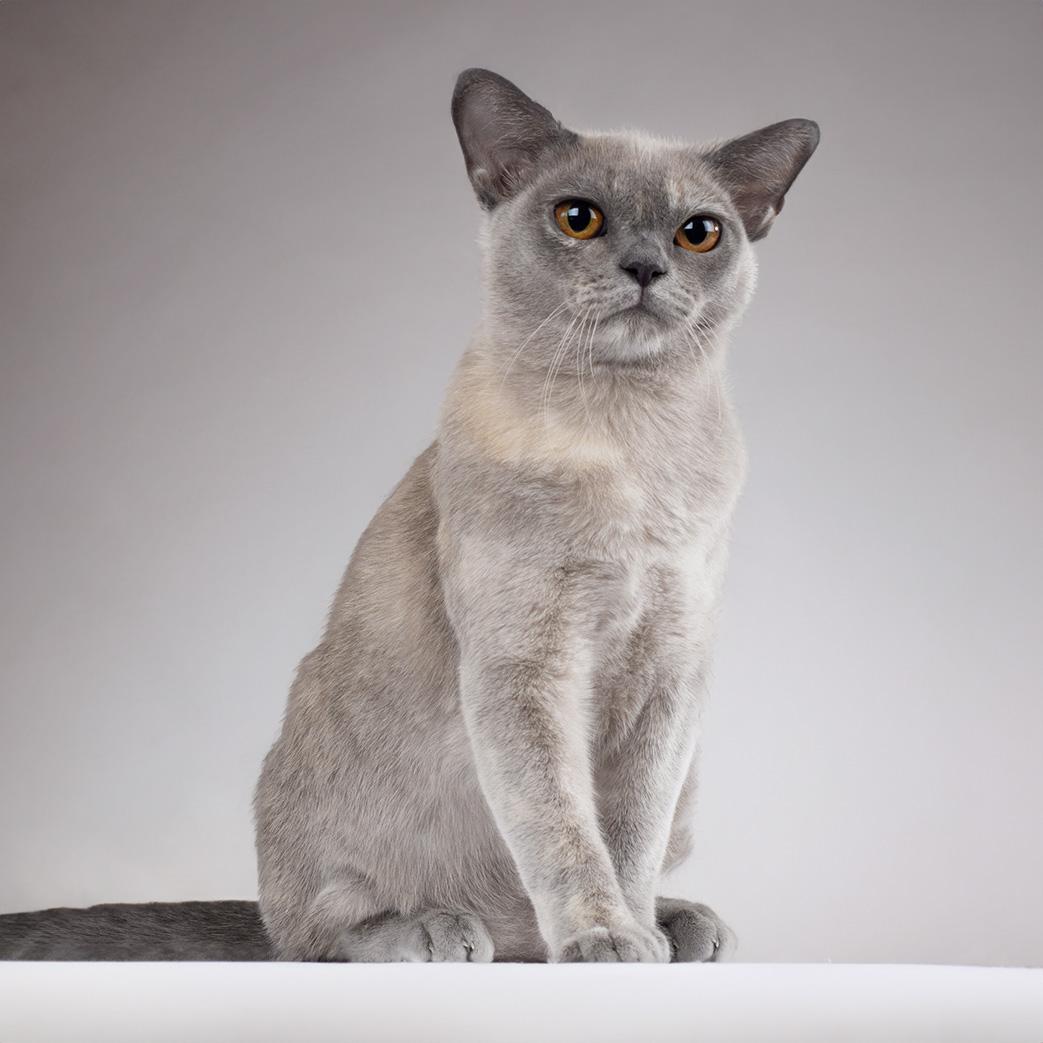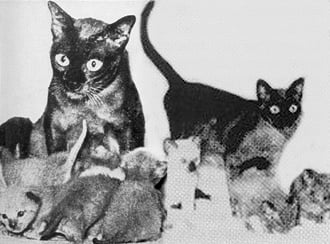
A Unique Feline: The Burmese Cat
Subtle Affection Meets Hypnotic Beauty: The Burmese cat doesn’t just sense your moods; it deeply connects with you. Their captivating, large golden eyes don’t just spell beauty, they narrate tales of ancient allure. Beyond this aesthetic magnetism, their vibrant and affectionate nature ensures they seamlessly become an integral part of any family that cherishes an outgoing and curious feline member.
Burmese Cat Personality and Temperament
A Balance of Playfulness and Devotion: Burmese cats are a delightful blend of intelligence, amusement, and an unwavering bond with their human counterparts. Their loyalty is unparalleled, and if you yearn for a pet that thrives on affection, the Burmese cat stands out as a top contender.
Eternal Youthfulness: One of the most enchanting traits of the Burmese is their consistent playful nature. Whether they are 16 or just 1, their animated antics will demand your attention, ensuring their presence is always acknowledged.
Characteristics Across Genders
While there may be minute variations in temperament across genders, it’s essential to understand that each Burmese cat is unique. Their behavior and preferences often boil down to individual personalities more than broad gender-specific traits. But one thing remains consistent: their undeniable love and curiosity for their surroundings and family.
Socially Active with Specific Preferences
These cats blend well with dogs, other cat breeds, and, naturally, with their fellow Burmese. While they are sociable and can befriend various animals, when given a choice, they seem to have a slight inclination towards their own kind, which they recognize regardless of color variations.
Melodious Communicators
Unlike their Siamese and Oriental cousins, who are renowned for their vocal prowess, Burmese cats are relatively more reserved. They’ll vocalize, but mainly when they have something significant to share. Their communications are sweet-toned, ensuring you’re attentive without feeling overwhelmed.
Burmese Cats: A Personality that Enthralls
Loyalty Personified
Owners will often recount tales of their Burmese cat’s unparalleled attachment. If loyalty had a feline face, it would undeniably be that of a Burmese. Their constant desire for company means they’re always seeking that cozy spot on your lap or that snug corner in your bed. And they are exceptionally child-friendly, further cementing their reputation as family pets.
Entertainers at Heart
With a Burmese cat around, dull moments are a rarity. They often take it upon themselves to keep their human family entertained, be it through their playful endeavors or their unique ways of engaging with toys. And if you’re not in the participatory mood, they’re content being the solo performer, ensuring you’re regaled from a distance.
Determined Thinkers
The intelligence of the Burmese breed often translates into determined pursuits. When they set their mind on something, expect some persistent efforts. Their vocal moments, while infrequent, are usually indicative of strong opinions or needs.
Indoor Protégés
Given their dependence and trust in their human families, Burmese cats aren’t adept at fending for themselves outdoors. The world outside the safety of the home presents many risks. Hence, they thrive best in indoor environments, where their safety and well-being are assured.

Burmese Cat Care: A Comprehensive Guide
Your Burmese cat deserves the best, and with a little guidance, you can provide all they need for a vibrant and healthy life. Offering proper care, understanding their dietary needs, and attending to their grooming and health requirements can make your feline friend’s life enriched and joyful.
The foundation of a healthy Burmese life
Love and Affection: More Than Just A Feeling
Burmese cats thrive on the love and care you shower on them, which significantly impacts their overall health and temperament. These exquisite creatures crave affection from their families. Their emotional well-being is as crucial as their physical health, so ensure they’re consistently surrounded by love.
Effortless care for an extraordinary breed
Minimalistic Care: Effortless Simplicity
Unlike some fancier cat breeds, Burmese cats boast a low-maintenance profile. They’re straightforward in their care requirements, ensuring that even first-time cat parents can handle them with ease. By offering them a basic, balanced diet, ensuring they’re in top health, and maintaining their grooming routine, you’re creating an environment where they can thrive and feel at home.
Building blocks for a lively lifestyle
Diet and Nutrition: Fuel for the Feline
Given the Burmese cat’s active nature, they thrive on a protein-packed diet. A carefully curated nutritional plan is pivotal for addressing all their physiological needs and guaranteeing their well-being. Regularly consult with a vet to ensure the dietary choices you make meet the evolving requirements of your Burmese cat.

Caring for Your Burmese Cat
Healthcare Essentials for a Thriving Life
Burmese cats are known for their strong health, but maintaining a balanced, ideally grain-free diet is crucial for their well-being. Regular vet check-ups, timely vaccinations, and vigilant observation for any signs of behavioral changes are vital care practices for any cat breed.
Simple Steps to a Glossy Coat
Maintaining a Silky Smooth Coat
Grooming is key to keeping your Burmese cat’s spirit lively. Their short, silky coat minimizes grooming efforts but still requires regular attention. Weekly brushing with a soft rubber brush will keep their coat shiny, effectively removing any loose fur and ensuring their coat remains sleek and smooth.
Remember, while Burmese cats are relatively easy-going, they still rely on your dedication and love to thrive. By incorporating these care tips, you’ll ensure your furry friend lives a healthy, happy life, building memories to cherish.
European and American Burmese Cat: Distinct Standards and Breed Identities

The history of the Burmese cat is fascinating, especially considering its division into two distinctive variations: European and American. Today’s modern Burmese cat breed found its formative development across the United States and Britain, culminating in unique breed standards for each. While the breeding methods brought about various distinctive features in the two breeds, it’s noteworthy that several cat registries do not categorize them as two separate entities.
The European Burmese, popularly known in regions such as Europa, the UK, Australia, and New Zealand, showcases a svelte physique characterized by a long body, slender legs, and oval paws. The facial structure is notably wedge-shaped, accompanied by a prominent long muzzle and captivating almond-shaped eyes. Complementing its physique is its tail, which usually stretches to a medium length.
In contrast, the American Burmese, with roots in the USA, exudes a different charm. It has a more robust, compact body, and legs that harmoniously align with its body structure. The facial contours are broader with a concise and slightly flattened muzzle. The eyes, distinctively round, juxtaposed with ears wider at the base, differentiates it from the British variant. Nevertheless, both breeds converge with similar paw shapes and tail lengths.
Size-wise, both the British and American Burmese cats comfortably fit within the small to medium category, generally weighing in between 4 to 6 kg. Their muscular frame gives them an unexpected weightiness, leading to the delightful nickname, “brick wrapped in silk”.
The coat texture remains consistently short, emitting a silky sheen. Historically, all Burmese cats sported a rich dark brown hue, referred to as sable in the USA, brown in the UK and Australia, and seal in New Zealand. Contemporary breeding, however, has diversified the color palette considerably.
For the American variant, the breed standard lists four color variations: sable (parallel to brown), blue, champagne (akin to chocolate), and platinum (resembling lilac).
The European counterpart, in comparison, has a more extensive color repertoire: brown (or seal), blue, chocolate, lilac, red, cream, seal tortie, blue tortie, chocolate tortie, and lilac tortie.
One of the striking visual elements of the American Burmese is its large, slightly surprised-looking eyes, distinctly round and set apart. The European version, while also possessing large eyes set wide apart, contrasts with a top eye line that is straight and slants gently towards the nose. This oriental feature, paired with a rounded bottom eye line, lends it an exotic appeal.
In the realm of cat associations, it’s crucial to highlight that American associations like CFA and TICA, along with Europe’s WCF, classify the Burmese cat as two separate breeds: the American and European Burmese, each with its own breed standard. Contrastingly, Europe’s highly reputed FIFe doesn’t bifurcate the breed; its standard solely endorses the European Burmese.

History and Origin of the Burmese Cat
Legend has it that the Burmese cat lineage traces back to the feline residents of Burmese monasteries. For at least 500 years, these cats were revered as deities. In the poetry book from the Ayutthaya period (the ancient name for Siam and its capital, now known as Thailand) spanning from 1350-1750, Burmese cats were distinctly mentioned. In Burma (modern-day Myanmar), it was believed that the Burmese cat brought prosperity and good fortune to a household.

Fast forward to 1930, Dr. Joseph C Thompson of San Francisco, California, a retired naval officer and psychiatrist, introduced Wong Mau, a brown female Burmese cat. Many breeders initially thought of Wong Mau as merely a dark Siamese variant, but Dr. Thompson believed otherwise. Through extensive breeding experiments with the support of geneticists and biologists, Billie Gerst of Gerstdale cats, and Mrs. Virginia Cobb of the acclaimed Newton Siamese lineage, Dr. Thompson’s theory was confirmed.
In the absence of a male Burmese in the USA, Dr. Thompson bred Wong Mau with a sealpoint Siamese named Tai Mau from Thailand. The resulting litter consisted of sealpoint Siamese and brown kittens resembling Wong Mau. A subsequent mating between Wong Mau and her son Yen Yen Mau produced a darker brown kitten. This distinctively dark-coated feline was christened the “Burmese.”
It’s worth noting a prevalent confusion: there is another breed called the Birman (or Sacred Birman). Misunderstandings often arise due to Google translator incorrectly translating “Burma” as “Birma” in many languages.
In 1948, the first Burmese cats reached the UK. By 1955, a unique silver-gray kitten was born, endearingly named “Blue Surprise.” This marked a turning point, as the brown Burmese was genetically equivalent to the Siamese seal-point, and the blue mirrored the Siamese blue-point. This was just the beginning. America witnessed the emergence of a lighter shade of the brown Burmese – termed either Chocolate or Champagne, followed by a pale blue variant named Lilac or Platinum.
Between 1965 and 1975, breeders in the UK introduced the red color gene by crossbreeding with red domestic tabbies and red Siamese cats. This resulted in the birth of red, cream, and tortoiseshell Burmese cats.
Europe’s introduction to the Burmese began in the late 1950s, primarily in Scandinavia. The breed’s popularity surged with multiple imports during the 1960s and 1970s. By the 1960s, countries like Germany, Holland, and France saw the Burmese making its mark, and the 1970s welcomed an array of new colors from the UK.
Australia and New Zealand welcomed their first Burmese cats in 1957. Due to strict animal import regulations and quarantine measures, Australia saw the Burmese breed evolving in isolation for a considerable period. In the subsequent years, Burmese cats bifurcated into two distinct breeds: the European and the American Burmese cat.
 en
en  de
de fr
fr